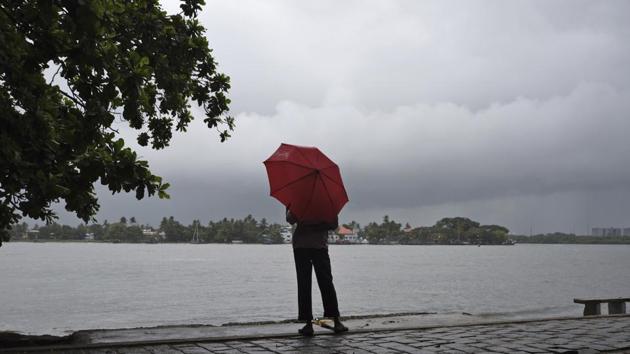Monsoon arrives in Kerala three days ahead of schedule
The season usually arrives around June 1 every year and covers most parts by July.
The southwest monsoon arrived three days ahead of schedule in Kerala on Tuesday, heralding the start of the rainy season in mainland India and the onset of the summer-sown or kharif agricultural season that accounts for half the country’s annual food output.

It has been raining for the past two days in Kerala, the first to receive the annual rains that are the lifeline of India. The monsoon is critical for agriculture because nearly 60% of India’s cropped area lacks access to assured irrigation; a good monsoon is one enabling factor of a healthy rural economy;. Two-thirds of Indians depend on agriculture for a livelihood. With the pre-monsoon showers this week, days, there was no fanfare to the arrival of the monsoon this year. Indeed, many people got to know that the monsoon had arrived, and before schedule, after the India Meteorological Department (IMD) made the announcement in New Delhi.
The monsoon usually arrives around June 1 every year. After arrival in Kerala, the rains usually take 15 days to cover the entire southern peninsula and most parts of the country by July.
The onset is in line with IMD’s prediction, which comes with a model error of ± 4 days.
Skymet Weather, a private forecasting agency, had announced that conditions for the onset of monsoon had been fulfilled by Monday and the onset of rains would happen on May 28.
Only the IMD can officially declare the arrival of the monsoon. It had predicted rains would arrive over the Andaman and Nicobar Islands, where they reach before the mainland, by May 23. “There was a delay in the onset of monsoon over the Andaman & Nicobar Islands because of the cyclonic system in the Arabian Sea that was blocking the advance of the monsoon. However, since that weakened into a depression, the monsoon has advanced quickly,” DS Pai, senior scientist at the IMD, said.
“Heavy rain was reported from many parts of the state and Lakshadweep. Amini in Lakshadweep reported 24 mm rain and Konni (Pathanamthitta) in Kerala has 18 mm. Conditions are conducive for further advancement of clouds,” said IMD regional director K Santosh.
The onset is announced when three conditions are fulfilled: after May 10, when there is at least 2.5mm rainfall for two consecutive days at 60% of the 14 stations in Kerala; strong and deep westerly winds from the Arabian Sea; and outgoing long wave radiation below 200 watt per square metre, which indicates a thick cloud cover.
“If the IMD does not consider that all three conditions are met, then tit does not declare the onset of monsoon,” Mahesh Palawat, chief meteorologist at Skymet Weather, said. “We used IMD data for rainfall but for the other two we used our own data.”
The monsoon season in India lasts between June and September and the rains advance from the south, with northwestern India receiving rains between June 15 and July 15. The rains start withdrawing around August.
In its preliminary forecast in April, the IMD predicted a normal southwest monsoon this year, which occurs when rainfall is between 96- 104% of the 50-year average of 887 mm, also called the Long Period Average (LPA).
This year it will be 97% of the LPA with an error margin of +/- 5%, the weather agency said.
While Kerala is happy that the monsoon is early, some in the state are worried because the rains bring a myriad viral diseases to the state. The state recently witnessed the outbreak of the dreaded Nipah virus that claimed the lives of 14 in north Kerala. Timely showers help farmers to start sowing of major summer crops including rice, cotton, pulses, soyabean, oilseeds and coarse cereals. For robust food output, the showers must now advance rapidly to rest of the country. “There is no correlation between early or timely arrival of the monsoon and its subsequent progress. We hope it covers most parts of the country in time. This is not always the case,” said SK Ramesh, a former agronomist with the state-run Indian Council of Agricultural Research.
In 2016, the monsoon made steady progress over south India, after a nine-day delayed onset on June 8. Yet, its progress in other parts was behind schedule for the first 15 days of the rainy season. In that year, by the first week of July, while south India recorded surplus rainfall of 12%, showers in central, northwest and eastern parts were been deficient by 46% 14% and 34%.
Sowing in central Indian states such as Andhra Pradesh, a major paddy-growing state, and Maharashtra starts by June third week.
(Ramesh Babu in Thiruvananthapuram and Zia Haq in New Delhi contributed to this story)






